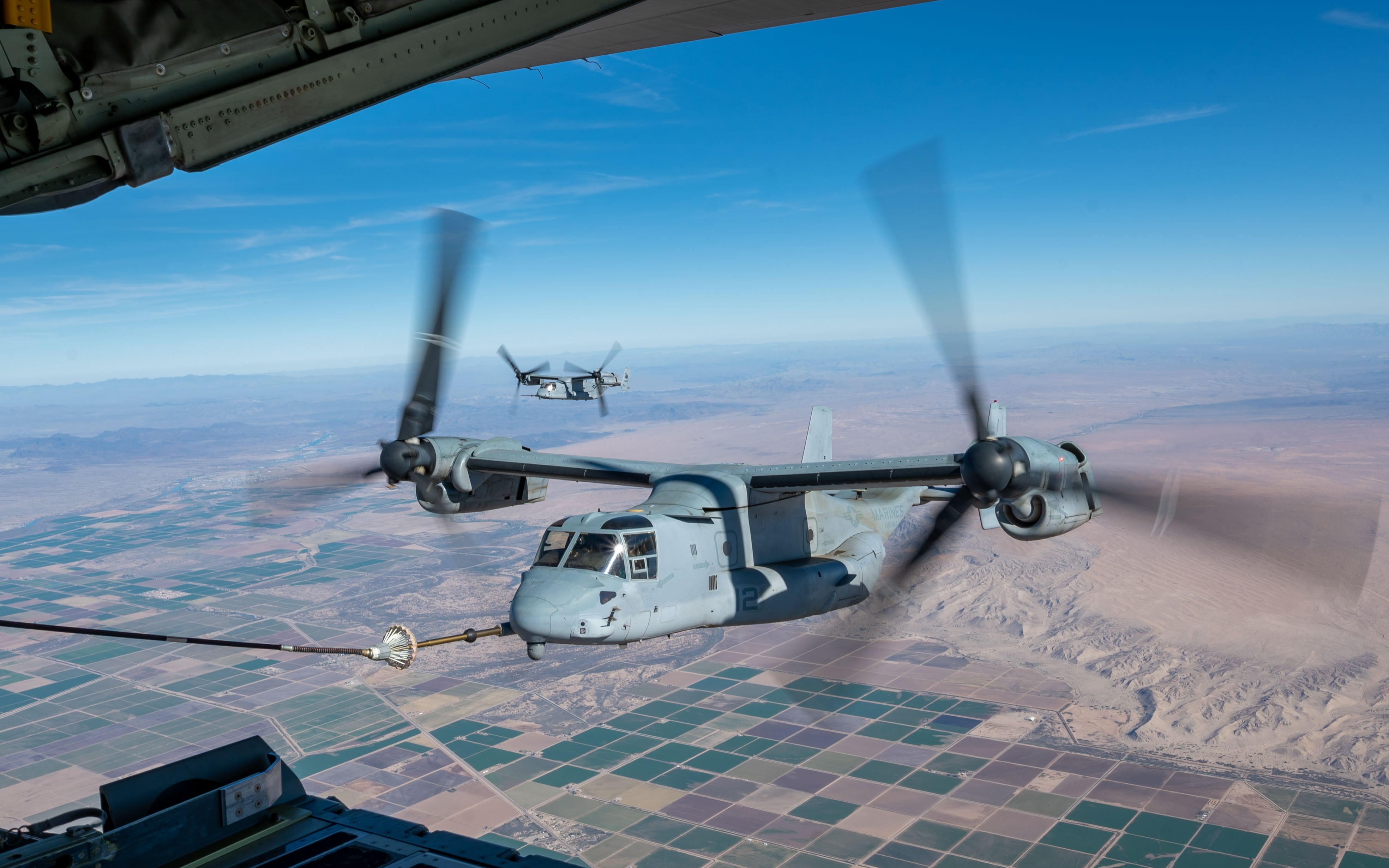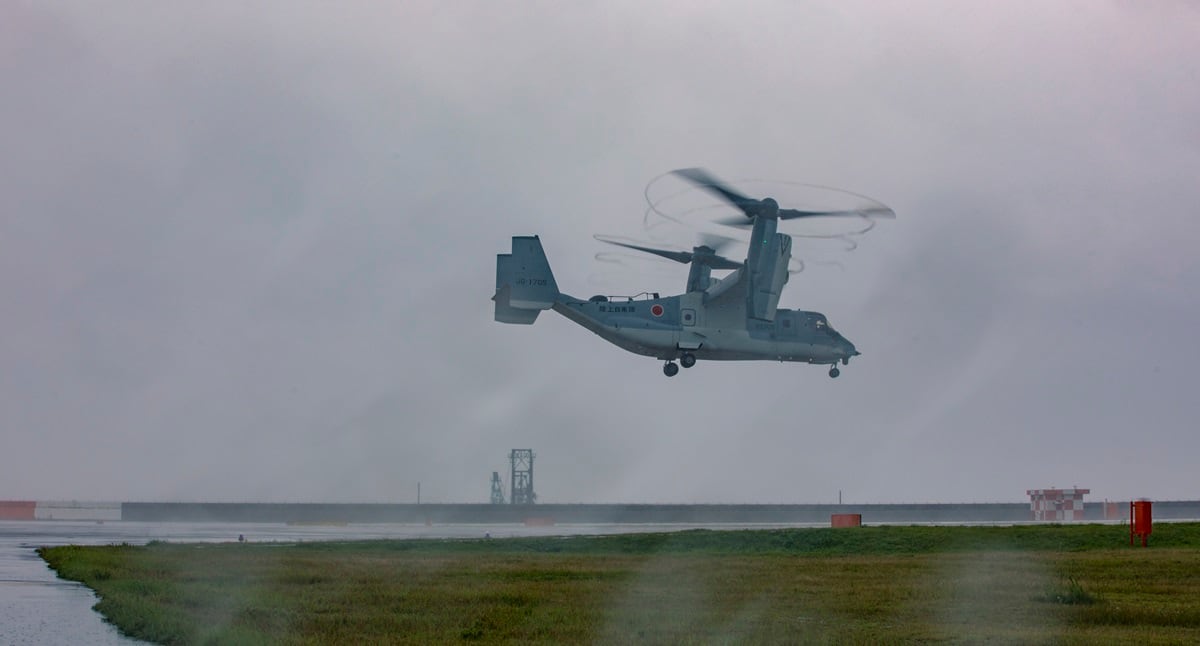In early December 2016, “Flight Quarters” sounded again for the 134th consecutive day of Operation Odyssey Lightning ― the fight against the Islamic State in Libya, or ISIL.
Our Marine Medium Tiltrotor Squadron 264 (Reinforced) was providing support for the mission from the Mediterranean, Arabian and Red Seas. On the final day of our six-month deployment, I thought back to all we had accomplished on this deployment, much of it due to the incredible capability of the MV-22 Osprey and its crew.
Over four combat deployments to Iraq and Afghanistan, I flew the CH-46E Sea Knight and MV-22B Osprey, but this deployment was different.
Normally, we operated from various amphibious ships during the day and night, with replenishments at sea occurring every seven to 10 days.
RELATED

But in this deployment, that battle rhythm was not fast enough to maintain the needed momentum, parts, missiles, bombs and equipment for the ships, the aircraft and the ground vehicles, so our Ospreys became critical to ensuring the operational tempo did not miss a beat.
During our deployment, AV-8B Harriers and AH-1W Cobras had conducted offensive air support from U.S. Navy ships.
Collateral damage during these operations is always a significant concern. To ensure accuracy, tailkits were needed on the 500-pound bombs the Harriers were carrying. Onboard supplies ran critically low.
The only answer, short of moving the ship closer to Sigonella in Sicily, Italy, (which would shorten the period Harriers could remain on station) was to send the Ospreys on the 700 nautical mile round trip from ship to shore to keep the Harriers armed and ready.
Even when part of the amphibious ready group and Marine expeditionary unit moved into the Red Sea, our Ospreys continued to fly more than 800 nautical miles a day, several days a week. Those sorties delivered vital logistics support to Djibouti, for further movement to Sigonella, Italy, in Sicily, and follow-on replenishment for the other amphibious ships off the coast of Libya.
Very simply, the Osprey made the entire mission possible.
That’s because the radius of the Osprey expanded the fleet’s logistics range by more than 3.5 times its predecessor. And when we connected with KC-130 aerial refueling aircraft we were able to extend the available range even further.
Our unsung capability also was invaluable in transporting leadership from shore to ship.
When U.S. Navy flag leadership needed to move quickly from Italy to a U.S. Navy ship hundreds of miles away, they looked to the Ospreys.
The speed, range and flexibility of the V-22 provided strategic leaders with decision space because they could travel from the helicopter pad at their headquarters to a small aviation-capable command ship hundreds of miles away. When their meeting finished, they could fly back on those same V-22s.
No longer did leadership have concerns about the distance from shore or lost time lingering on a ship away from their headquarters.
Our six-month deployment in 2016 with the 22nd Marine Expeditionary Unit provided a glimpse of the importance of the V-22 to connect land-based supply hubs with naval aviation kinetic fires through long-range aerial resupply ― and it offers lessons for the future.
In the current and future fight, those supply hubs will be land- and sea-based, highlighting the importance of the V-22 as a connector for aircraft carriers and Lightning carriers against adversaries with more robust coastal defenses.
Fast forward to the following year, where my V-22 squadron was again indispensable to the mission. Only this time, it would be in a humanitarian role.
When Hurricane Maria devastated Puerto Rico in 2017, my squadron flew eight Ospreys to South Florida and then to the northwest corner of the island. The V-22s supported the entire geographic surface of Puerto Rico, while also providing long-range logistics to the U.S. Virgin Islands.
The positive impacts were evident everywhere we went. Some areas of Puerto Rico lacked sufficient food and potable water for weeks after the disaster. In some cases our ability to reach austere locations meant we were the first response they had encountered in the weeks following the devastating hurricane.
Our ability to reach remote locations across Puerto Rico and the U.S. Virgin Islands was salvation that was clear on the faces of the men, women and children we aided. For our squadron and the two others on that mission, it was an experience we’ll never forget.
Before flying the Osprey, I had participated in combat medical evacuations and direct-action raids with the CH-46E Sea Knight transport helicopter, spanning the entire perimeter of Iraq. Later, I did the same in the MV-22B Osprey. I have seen success on a tactical, operational and strategic level in both aircraft.
Don’t get me wrong, I love the Phrog, as the Sea Knight is known. But as I tell everyone who asks, I would never go back.
For the past 18 years, I have been fortunate to be a member of the V-22 community. Thinking back to that final day of our deployment, it was then that I fully appreciated the opportunities created by the Osprey’s revolutionary capabilities.
Lt. Col. Douglas Thumm (retired) is a former V-22 Osprey squadron commander. He is still a contract flight instructor with the V-22.




